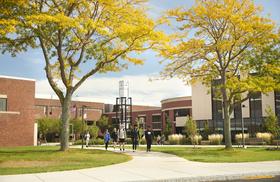How to Visit a Community College Campus: A Parent’s Checklist
Visiting a community college campus is one of the most important steps families can take when helping a student make an informed decision about higher education. While online research and brochures are helpful, nothing replaces the experience of walking through classrooms, meeting faculty, and getting a sense of the student environment.
For parents, a campus visit provides insight into academic quality, student life, and affordability. This 2025 parent’s checklist will guide you through what to look for, what questions to ask, and how to make the most of your community college campus visit.
Why Visit a Community College Campus?
Community colleges play a vital role in higher education. According to the American Association of Community Colleges, nearly 10 million students are enrolled in community colleges nationwide, many seeking transfer pathways or workforce training. Visiting in person allows families to:
Evaluate academic resources, such as labs, libraries, and technology.
Understand transfer opportunities to four-year universities.
Assess student support services like tutoring, advising, and mental health resources.
Gauge the overall campus culture and student engagement.
Parents often focus on affordability, but visiting helps ensure the college is also the right academic and social fit.
The Parent’s Campus Visit Checklist
1. Prepare Before You Go
A successful visit starts with preparation. Encourage your student to lead the process, but stay actively engaged.
Steps before visiting:
Research programs of interest. Confirm the college offers strong courses in your child’s intended field.
Register for an official tour. Many campuses offer parent-specific sessions.
Check transfer agreements. Look into partnerships with state universities. College transfer guides can provide insights.
Make a list of questions. Cover academics, financial aid, student life, and career services.
2. Academic Programs and Classrooms
The quality of instruction should be the top priority. Parents should ask:
What is the average class size?
Are professors full-time faculty or adjuncts?
How often do instructors meet with students outside class?
What internship, clinical, or hands-on learning opportunities exist?
Take time to walk through classrooms, computer labs, and specialized facilities. For students in STEM, nursing, or technical fields, updated labs and equipment signal institutional investment.
3. Student Support Services
Strong support services can make the difference between a student thriving and struggling. During your visit, ask about:
Academic advising – How personalized is the guidance?
Tutoring centers – Are they free and accessible?
Career services – Does the college assist with job placement?
Mental health resources – What counseling is available?
Many community colleges are investing in holistic support. For example, some campuses now provide food pantries and childcare services for student parents.
4. Campus Life and Student Engagement
Parents may assume community college lacks traditional student life, but opportunities for involvement are often plentiful. During the visit:
Tour the student center or lounge areas.
Ask about clubs, athletics, and student government.
Check bulletin boards for cultural events, workshops, and lectures.
Engagement outside the classroom helps students build networks, develop leadership skills, and feel more connected to campus life.
5. Financial Aid and Affordability
Cost is a central reason families choose community colleges. Yet, financial aid varies widely. Parents should:
Visit the financial aid office during the tour.
Ask about scholarships, state aid, and work-study opportunities.
Confirm whether the college participates in tuition-free or “Promise” programs.
According to College Board research, average community college tuition remains significantly lower than four-year public institutions. Still, families should clarify fees for labs, books, and technology.
6. Transfer Pathways
For students planning to earn a bachelor’s degree, transfer is critical. Parents should:
Confirm articulation agreements with local universities.
Ask how many credits typically transfer.
Explore honors programs that provide additional support for transfer-bound students.
A strong community college will provide academic maps to ensure students stay on track.
7. Campus Safety and Accessibility
Parents understandably worry about safety and accessibility. During your visit:
Review campus security policies and emergency protocols.
Ask about late-night transportation or escort services.
Assess accessibility for students with disabilities.
Many colleges post annual safety reports online. Ask for the most recent copy during your tour.
8. Questions Parents Should Ask Admissions Staff
Having a prepared list of questions helps parents gather essential details:
What percentage of students transfer to a four-year university?
What support exists for first-generation students?
How do faculty and advisors track student progress?
What are the most common reasons students withdraw—and what is done to address them?
Sample Parent’s Campus Visit Checklist
Here’s a summary table you can print and bring to your visit:
| Category | Questions to Ask | What to Look For |
|---|---|---|
| Academic Programs | Class sizes, faculty availability, internships | Updated labs, small classes, hands-on learning |
| Student Services | Advising, tutoring, mental health, career counseling | Accessible, student-centered services |
| Campus Life | Clubs, athletics, events | Active student spaces, engaged peers |
| Financial Aid | Scholarships, Promise programs, hidden fees | Transparent cost breakdown |
| Transfer Pathways | Credit transfer agreements, university partnerships | Clear academic maps, honors programs |
| Safety & Accessibility | Security measures, disability services, emergency protocols | Safe, welcoming environment |
Helping Your Student Lead the Process
While parents play a supportive role, it is essential to let students take ownership of the visit. Encourage them to:
Ask questions directly to faculty and staff.
Imagine themselves as part of the student community.
Reflect afterward on what felt welcoming—or concerning.
A student-led approach builds confidence and independence, while parents provide guidance and perspective.
Final Thoughts
Visiting a community college campus is more than a quick tour—it is a chance to see firsthand whether the environment will support your student’s academic and personal growth. By preparing questions, observing resources, and focusing on both academics and student life, parents can help ensure their student makes a well-informed decision.
A thoughtful campus visit transforms the choice of a community college from a financial decision into an empowering step toward a brighter future.












